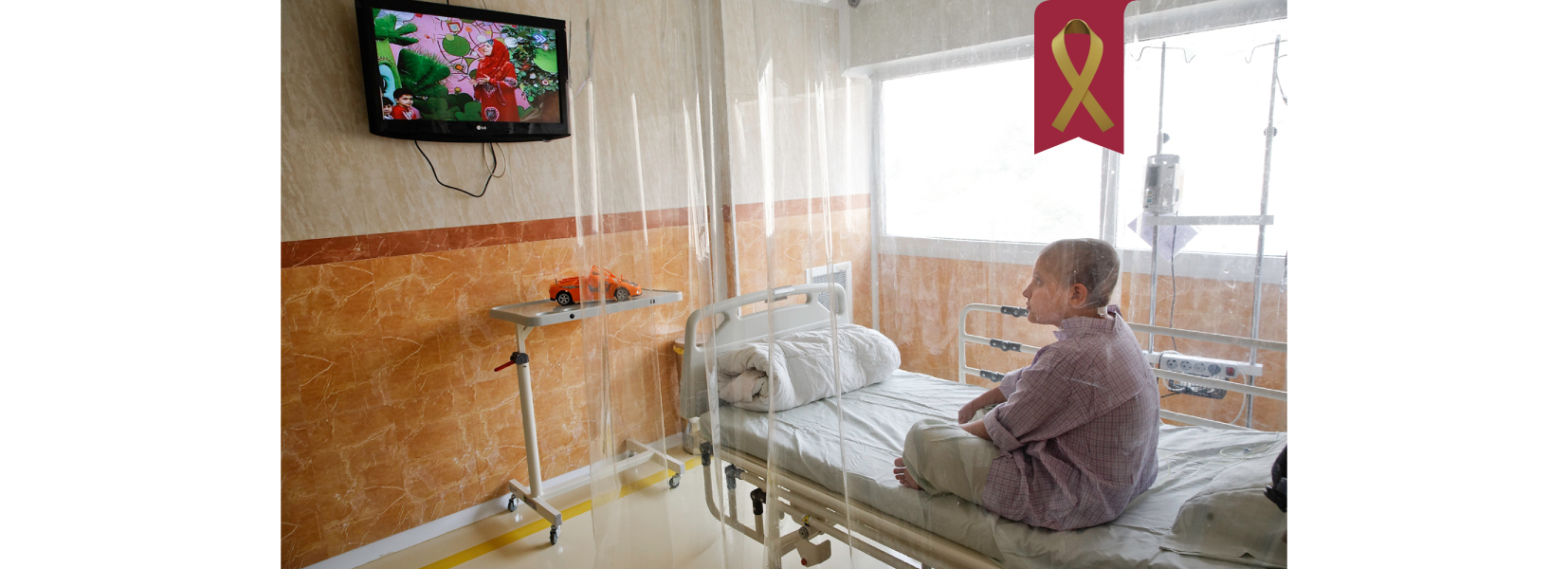
Stem Cell Transplantation; A Treatment for Childhood Cancer
- 18 September 23
- 434 revirew
- 0 comment
Cognition and prognosis of childhood cancer is one of the important factors in cancer-stricken children’s remission. Every year, September is worldwide marked as “Childhood Cancer Awareness Month” during which various campaigns are organized in different countries. In this line, we at MAHAK also strive to raise awareness about this disease among the society by joining Go Gold campaign; since early diagnosis of cancer can lead to less painful, less costly and more effective treatment.
As part of this campaign, “Stem Cell Transplantation” as one of the main cancer treatments is explained.
What is stem cell transplantation?
Our bones contain a spongy tissue called “bone marrow,” where hematopoietic stem cells exist. All of our blood cells are derived from these stem cells. The bone marrow of a healthy adult produces approximately 3 million red blood cells and 120,000 white blood cells every second.
In another word, it can be said that healthy stem cells are essential for our lives. When cancer or its treatments destroy stem cells, transplantation may be the best option for treatment. Treatments such as chemotherapy and radiation therapy not only target cancer cells but also affect healthy and normal tissues of the body by which stem cells are exposed to serious damage. Stem cell transplantation helps repair these damages and restore the natural production of blood cells, particularly in children whose bone marrow has experienced significant injury due to high-dose treatment.
Stem cell transplantation can be done in two ways: “autologous” or “allogeneic.” In autologous transplantation, healthy stem cells are taken from the patient’s own bone marrow. The stem cells are harvested before starting the treatment and then reinfused into the patient after treatment. Autologous transplants are generally used for children with solid tumors.
In allogeneic transplantation, stem cells from a donor who is matched to the patient, such as a twin, sibling, or compatible individual, are used. This complex procedure may take several months to achieve full recovery; allogeneic transplants are also used in the treatment of blood cancers.
Which patients are eligible for stem cell transplantation?
Stem cell transplantation can be life-saving for some patients, but it is certainly not a suitable treatment for all children with cancer. The timing of the transplantation depends on the type of cancer, child’s general health condition, previous treatments, and more. Stem cell transplantation can be used to treat conditions where the bone marrow is damaged and can no longer produce healthy blood cells. It can also replace the population of blood cells that have been severely damaged or lost due to cancer treatments.
In some cases, patients are given chemotherapy before transplantation to eliminate cancer cells and create space for new stem cells. Patients with acute lymphoblastic leukemia (ALL) may also undergo total-body irradiation which is a type of radiation therapy.
What are pre-transplantation steps?
Before transplantation, specific medical tests must be conducted including HLA Typing test to ensure compatibility between the donor and the patient. Blood tests, urine tests, stool tests, ultrasound, CT scans of organs, and dental consultations are among the pre-transplantation tests.
Allogeneic transplantation often involves the use of immune-suppressing agents to reduce the risk of graft-versus-host disease (when the patient’s body rejects the donor cells).
What are the post-transplantation cares?
Patients who undergo transplantation are subject to regular tests and examinations as advised by their oncologist. Proper nutrition and physical health should also be observed after transplantation.
If the treatment progresses well, children usually return to normal life within about a year after transplantation. However, the child’s immune system should always be strengthened and keep the patients away from any types of germs and microbes and people with colds or with corona virus and flu.
What are the side effects of stem cell transplantation?
In the short term, stem cell transplantation can cause side effects such as nausea, fatigue, hair loss, and mouth sores. In some cases, the patient may also experience graft-versus-host disease.
If stem cells cannot produce enough new blood cells, it can put the child’s health at risk, leading to problems like infections, anemia, or bleeding. Many patients also develop pancytopenia (a decrease in red blood cells, white blood cells, and platelets). Some patients may experience painful sores, stomach discomfort, and diarrhea. In these cases, certain medications can help the patient.
Another risk after stem cell transplantation is infection. During and after the procedure of transplantation, patients have no immune system to help fight off infections, so even a common cold can be dangerous to their health
Transplantation is one of several treatment methods!
It is important to remember that stem cell transplantation is just one of the cancer treatment methods. Chemotherapy, surgery, and radiation therapy are other treatment options for children with cancer. Due to the type of cancer and the patient’s health status one or a combination of methods may be used. Early diagnosis of cancer leads to less painful, less costly, and more effective treatment for children.
Bone Marrow Transplant Department was established in 2011 as a reference center for pediatric stem cell transplantation in Iran. The first patient was admitted to this ward after almost eight months. Over the years, MAHAK has strived to provide the best services to children suffering from cancer throughout the country, relying on the knowledge and expertise of its physicians and oncologists. All these measurements are getting done with the aim of raising awareness among the society as well as increase the chance of remission for cancer-stricken children through early diagnosis.
